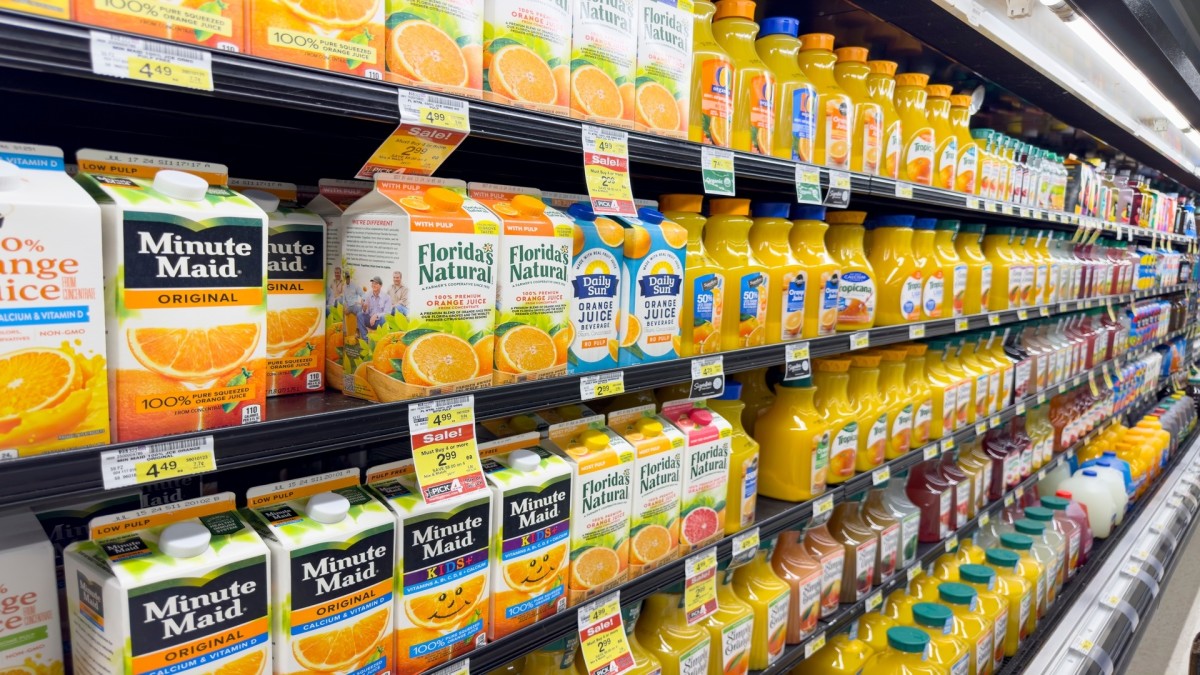While The Coca-Cola Company is best known for its iconic soda, it also owns Minute Maid and Simply, two of the world’s most recognizable juice brands. For decades, these labels have delivered some of the most popular orange juices on the market, yet few may know that their key ingredient is facing a severe, ongoing crisis.
The U.S. orange supply has declined for over 20 years, and Coca-Cola is now stepping in to change that.
Coca-Cola (KO) announced it is joining the Massachusetts Institute of Technology’s (MIT) Generative AI Impact Consortium as a founding member to help address the orange shortage caused by an incurable crop disease.
The MIT Generative AI Impact Consortium brings together leaders in technology and other industries to use artificial intelligence (AI) research to solve real-world problems. Its members include OpenAI, Analog Devices (ADI) , Tata Group, SK Telecom, and TWG Global.
Coca-Cola’s first project as a member is called “Save the Orange.” This initiative aims to combat citrus greening, also known as huonglongbing (HLB), a bacterial disease in citrus plants spread by the Asian citrus psyllid that threatens the orange supply worldwide.
“We have an unwavering commitment to developing effective solutions for citrus growers in the fight against HLB,” said Flagship Pioneering CEO Invaio Sciences and CEO Partner Amy O’Shea in the announcement. “We’ve seen firsthand the devastation of this disease, and the proven efficacy of our Trecise treatment in stopping it.
“Treatments and application technologies will be critical components of a multi-pronged coordinated effort to restore tree health, citrus production, and farmer profitability; we are honored to contribute our products and expertise to it.”

Image source: Shutterstock
U.S. orange crops see steep decline
Since first appearing in Florida in 2005, HLB has infected nearly all of the state’s orange trees, causing billions of dollars in losses across the global citrus industry.
Florida, once the nation’s leading orange producer, has been hit especially hard. According to the Farm Bureau, its orange output dropped 90% between 2005 and 2023.
Related: Coca-Cola makes a scary change with Fanta ahead of Halloween 2025
However, the impact has extended beyond Florida. The USDA reports that the U.S. now ranks sixth in global orange production, contributing 5% of the world’s supply. From 2015 to 2024, national orange output fell at a compound annual rate of 9%, with average year-over-year declines of around 10%.
The steep drop in domestic supply has increased the U.S.’s reliance on orange imports. But now, recent tariffs on foreign goods threaten to further disrupt the supply chain, raising costs and fears of future shortages.
Experts warn that without intervention, the world’s orange supply could end within the next 25 years.
Why the supply of oranges matters for Coca-Cola and consumers
Coca-Cola’s investment isn’t just about saving oranges, but also about safeguarding its lucrative juice business. In the second quarter of fiscal 2025, net revenues grew 1% to $12.5 billion.
While Coca-Cola doesn’t report Minute Maid or Simply sales individually, it noted gaining market share in nonalcoholic ready-to-drink beverages, with juice as a key driver.
Without an effective solution or prevention, this devastating disease could increase the cost of orange juice in the coming years, forcing consumers to bear the consequences.
“HLB is not just bad for farmers and the economy,” said University of California, Davis Biochemist and Nutritionist Professor Carolyn Slupsky in a statement. “The loss of fresh oranges and other citrus is a real possibility, and that would seriously impact our health.”
Related: Coca-Cola brings back controversial Coke flavor
#CocaCola #steps #solve #huge #beverage #problem